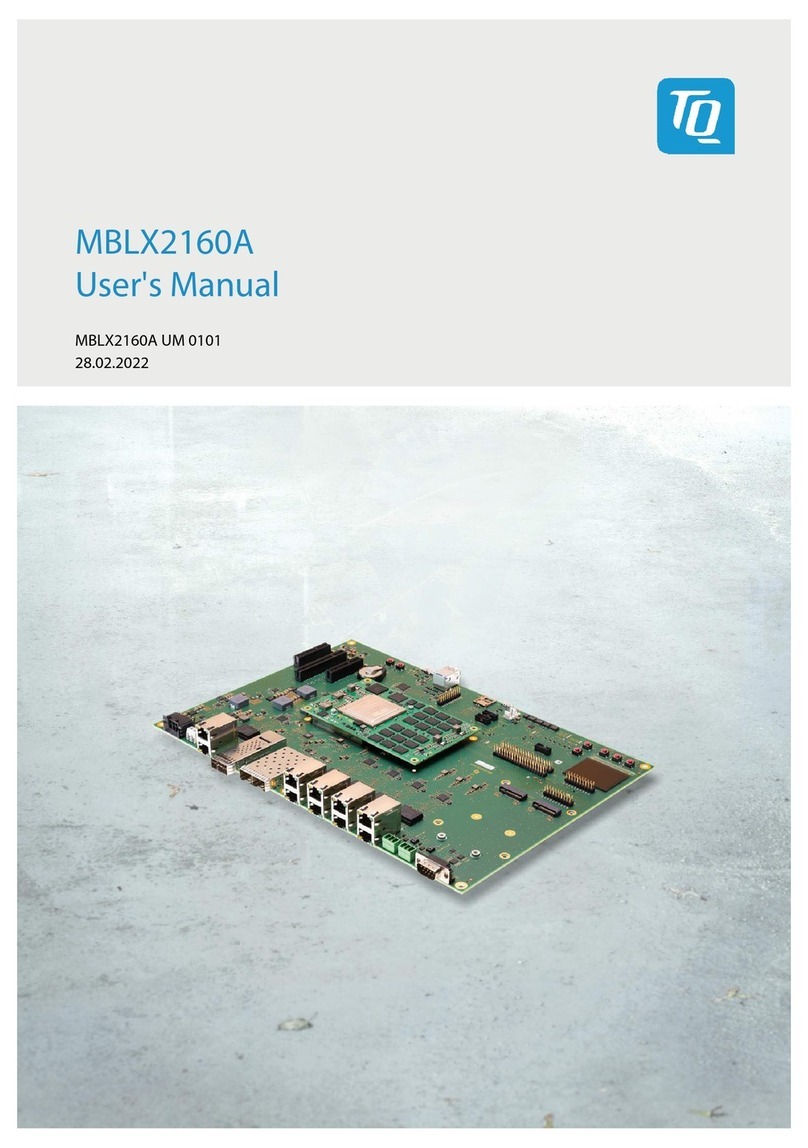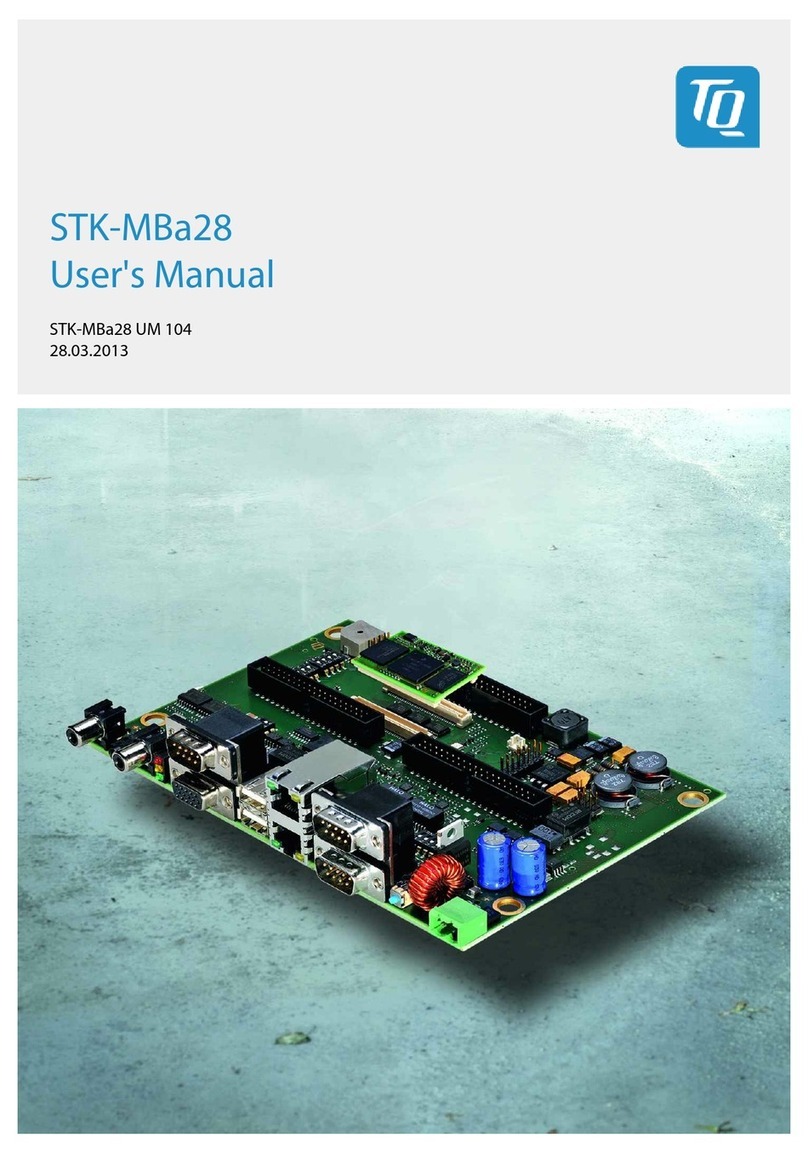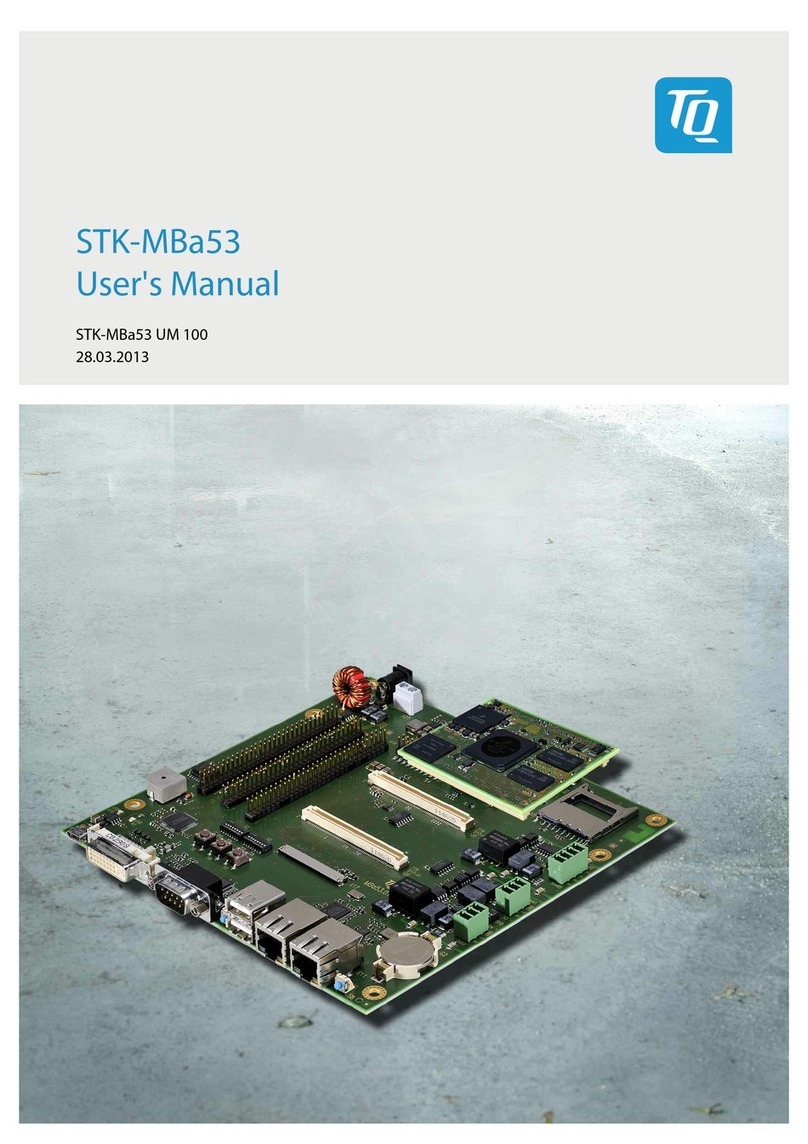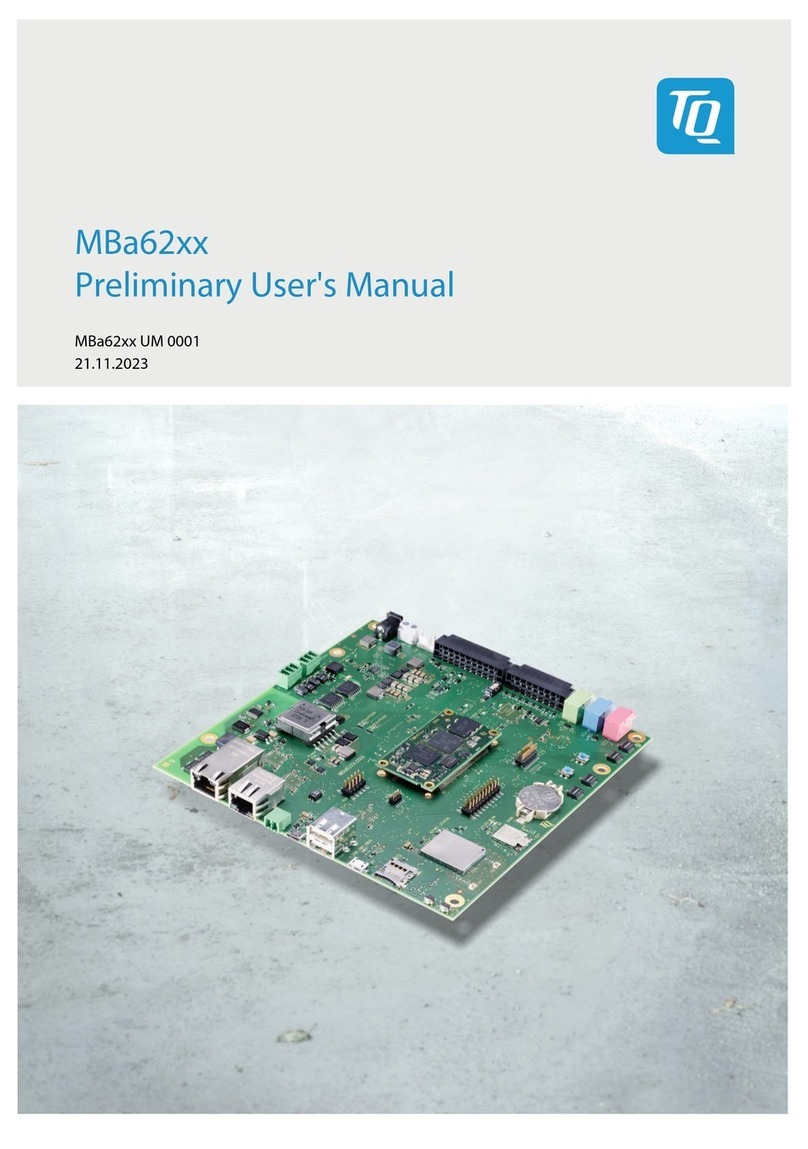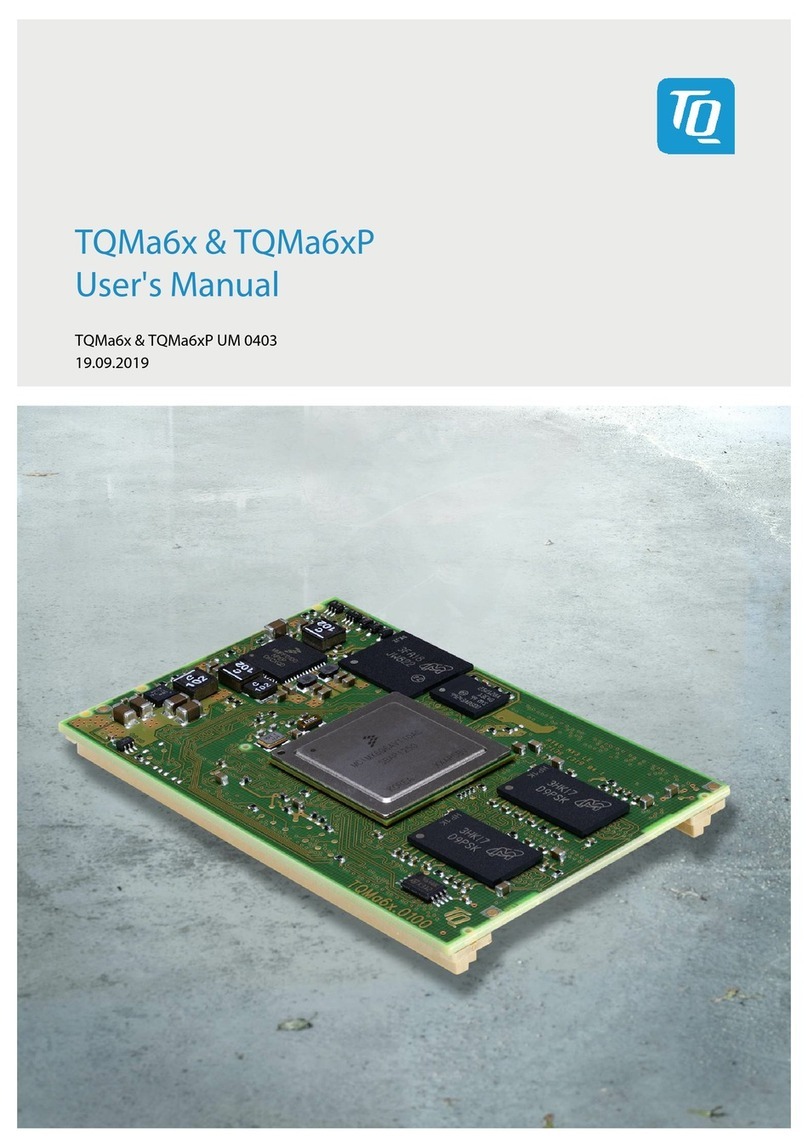
User's Manual l TQMa93xxCA UM 0001 l © 2023, TQ-Systems GmbH Page i
TABLE OF CONTENTS
1. ABOUT THIS MANUAL......................................................................................................................................................................................1
1.1 Copyright and license expenses..................................................................................................................................................................1
1.2 Registered trademarks ....................................................................................................................................................................................1
1.3 Disclaimer ............................................................................................................................................................................................................1
1.4 Imprint...................................................................................................................................................................................................................1
1.5 Tips on safety......................................................................................................................................................................................................2
1.6 Symbols and typographic conventions....................................................................................................................................................2
1.7 Handling and ESD tips.....................................................................................................................................................................................2
1.8 Naming of signals..............................................................................................................................................................................................3
1.9 Further applicable documents / presumed knowledge.....................................................................................................................3
2. BRIEF DESCRIPTION ..........................................................................................................................................................................................4
2.1 Key functions and characteristics................................................................................................................................................................4
2.2 CPU block diagram ...........................................................................................................................................................................................5
3. ELECTRONICS......................................................................................................................................................................................................6
3.1 Interfaces to other systems and devices...................................................................................................................................................6
3.1.1 Pin multiplexing ................................................................................................................................................................................................6
3.1.2 Pinout TQMa93xxCA........................................................................................................................................................................................7
3.2 System components ........................................................................................................................................................................................9
3.2.1 i.MX 93...................................................................................................................................................................................................................9
3.2.1.1 i.MX 93 derivatives............................................................................................................................................................................................9
3.2.1.2 i.MX 93 errata......................................................................................................................................................................................................9
3.2.1.3 Boot modes ......................................................................................................................................................................................................10
3.2.1.4 Boot configuration......................................................................................................................................................................................... 10
3.2.2 Memory..............................................................................................................................................................................................................11
3.2.2.1 LPDDR4 SDRAM..............................................................................................................................................................................................11
3.2.2.2 eMMC..................................................................................................................................................................................................................11
3.2.2.3 QSPI NOR Flash / NAND Flash.................................................................................................................................................................... 11
3.2.2.4 EEPROM M24C64-D....................................................................................................................................................................................... 12
3.2.2.5 EEPROM with temperature sensor SE97BTP ........................................................................................................................................ 12
3.2.3 Trust Secure Element SE050....................................................................................................................................................................... 12
3.2.4 Accelerometer/Gyroscope.......................................................................................................................................................................... 13
3.2.5 RTC.......................................................................................................................................................................................................................13
3.2.5.1 i.MX 93 internal RTC ......................................................................................................................................................................................13
3.2.5.2 Discrete RTC PCF85063A............................................................................................................................................................................. 13
3.2.6 Interfaces...........................................................................................................................................................................................................14
3.2.6.1 Overview ...........................................................................................................................................................................................................14
3.2.6.2 ADC......................................................................................................................................................................................................................15
3.2.6.3 CAN FD...............................................................................................................................................................................................................15
3.2.6.4 Ethernet / RGMII..............................................................................................................................................................................................16
3.2.6.5 I2C......................................................................................................................................................................................................................... 17
3.2.6.6 JTAG ....................................................................................................................................................................................................................18
3.2.6.7 GPIO ....................................................................................................................................................................................................................18
3.2.6.8 MIPI CSI ..............................................................................................................................................................................................................19
3.2.6.9 MIPI DSI..............................................................................................................................................................................................................19
3.2.6.10 LVDS.................................................................................................................................................................................................................... 20
3.2.6.11 SAI........................................................................................................................................................................................................................ 20
3.2.6.12 SPI ........................................................................................................................................................................................................................21
3.2.6.13 Tamper...............................................................................................................................................................................................................22
3.2.6.14 UART ...................................................................................................................................................................................................................22
3.2.6.15 USB ......................................................................................................................................................................................................................23
3.2.6.16 SD2 (SD-Card)..................................................................................................................................................................................................24
3.2.6.17 External clock sources .................................................................................................................................................................................. 25
3.2.7 Reset and unspecific signals ...................................................................................................................................................................... 25
3.2.8 Power.................................................................................................................................................................................................................. 26
3.2.8.1 Power supply ...................................................................................................................................................................................................26
3.2.8.2 Configurable voltages..................................................................................................................................................................................26
3.2.8.3 Power consumption...................................................................................................................................................................................... 27
3.2.8.4 Voltage monitoring....................................................................................................................................................................................... 27
3.2.8.5 Supply outputs................................................................................................................................................................................................27
3.2.8.6 Power-Up sequence TQMa93xxCA / carrier board............................................................................................................................28
3.2.8.7 Standby and BBSM ........................................................................................................................................................................................ 28






